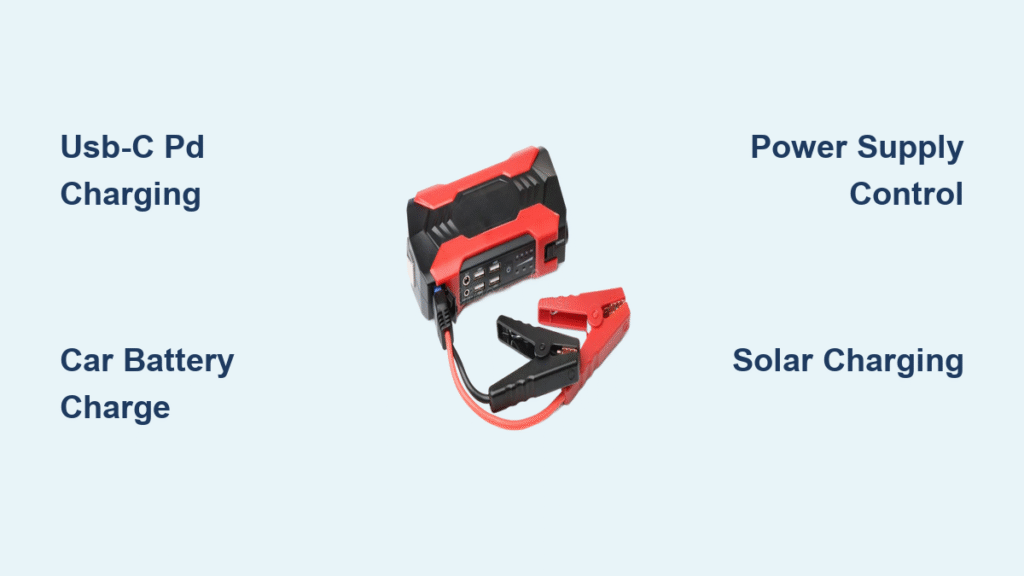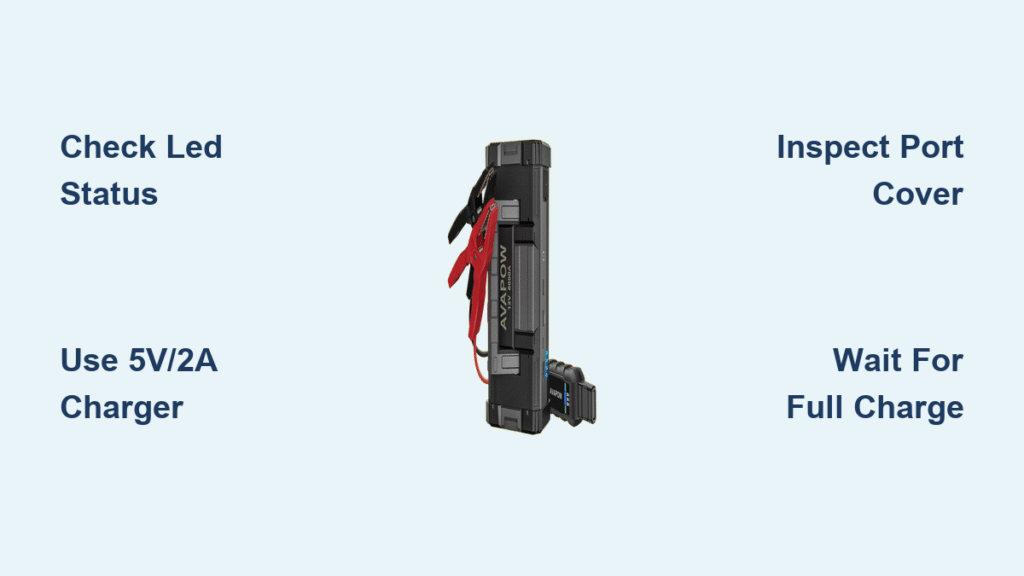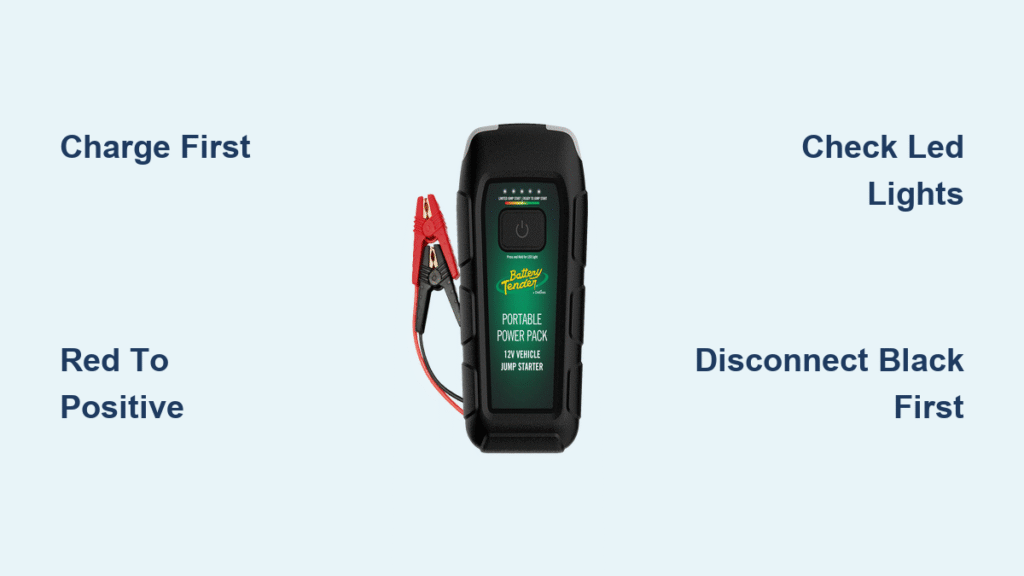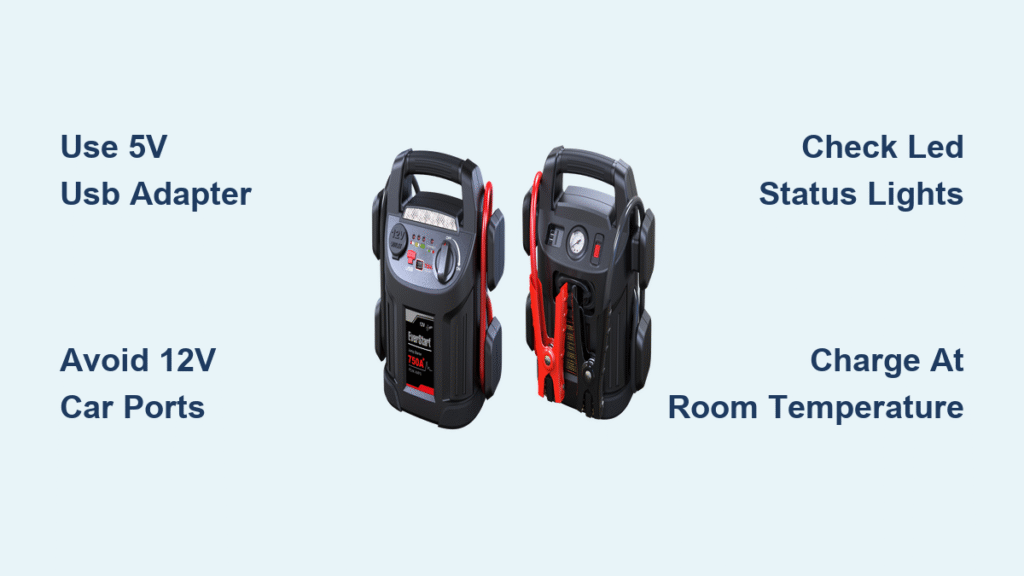You’re rushing out the door, running late for work, only to discover your car battery is dead. You grab your trusty jump starter from the trunk—but will it actually work? That heart-stopping moment when you realize your emergency device might be powerless is all too common. Understanding exactly how long a jump starter holds a charge can mean the difference between a quick start and being stranded on the side of the road.
This comprehensive guide delivers precise, real-world data about jump starter charge retention so you’ll never face an unexpected failure. Whether you use yours weekly or keep it as emergency backup, you’ll learn the exact timelines, maintenance practices, and storage techniques that ensure reliability when you need it most. Stop guessing and start knowing—your jump starter’s charge duration depends on factors you can control.
Why Your Jump Starter Loses Charge Between Uses
Most portable jump starters deliver one complete jump-start per full charge. After this single use, immediate recharging becomes essential to maintain readiness. While premium models can retain their charge for several months under optimal storage conditions, this duration depends heavily on your storage habits and environmental factors.
The natural degradation process begins the moment your jump starter leaves the charger. This deterioration accelerates significantly when the device sits unused for extended periods, making regular maintenance charging crucial for long-term reliability. Never assume your jump starter is ready just because it’s been sitting in your trunk—proactive maintenance determines whether it will save you or fail you in an emergency.
What Causes Self-Discharge in Jump Starters
Your jump starter loses charge through unavoidable chemical processes within the battery:
- Lead-acid models lose 3-5% of their charge monthly at room temperature
- Lithium-ion units lose only 1-2% per month under the same conditions
- Temperature spikes double self-discharge rates for every 18°F increase above 77°F
This explains why a jump starter that worked perfectly last fall might fail you in spring—it’s not magic, it’s chemistry. Understanding these rates helps you establish the right maintenance schedule for your specific model and storage conditions.
Lithium-Ion vs Lead-Acid: Which Holds Charge Longer?

Lithium-Ion Jump Starter Performance
Modern lithium-ion jump starters deliver superior charge retention, generally maintaining their ability to hold a charge for 3 to 5 years with proper care. High-end models can retain their charge for up to 6 months between maintenance charges when stored correctly.
Pro Tip: Premium lithium units from brands like NOCO retain 75% of their charge after 6 months in storage. This makes them ideal for emergency backup where infrequent use is expected. You can confidently store these units in your vehicle trunk knowing they’ll likely work when needed months later.
Lead-Acid Jump Starter Limitations
Traditional lead-acid jump starters mirror your car battery’s chemistry but suffer from higher self-discharge rates. These units typically maintain effective charge retention for only 2 to 4 years before significant capacity loss occurs.
Critical Warning: Lead-acid models require recharging every 30 days to maintain readiness, according to manufacturer Clore Automotive. If you store one in your garage for six months without checking it, you’re virtually guaranteed a failed jump attempt when you need it most.
Temperature: The Silent Jump Starter Killer
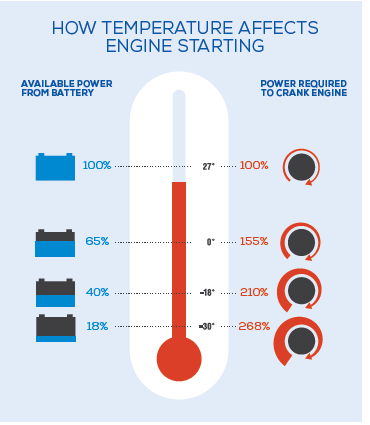
How Heat Destroys Charge Retention
Storage temperature dramatically affects how long your jump starter holds a charge. The optimal range sits between 50°F and 70°F (10°C to 21°C), where chemical degradation occurs at its slowest rate.
Temperatures above 85°F (29°C) accelerate self-discharge by doubling the rate for every 18°F increase. This explains why that jump starter you left in your car all summer likely won’t work when fall arrives—vehicle interiors regularly exceed 140°F in direct sunlight, effectively cooking your emergency device.
Cold Weather Charge Challenges
While less damaging than heat, cold temperatures also impact performance:
- Below 32°F (0°C), capacity drops by 20-30%
- Lead-acid models risk electrolyte freezing at low charge levels
- Lithium-ion units lose temporary capacity but recover when warmed
Expert Note: Always bring your jump starter to room temperature before use in winter. Trying to jump-start a frozen battery with a cold jump starter dramatically reduces effectiveness and may damage both units.
Your Jump Starter Maintenance Schedule Made Simple
Immediate Post-Use Protocol
Always recharge immediately after each jump-start to prevent deep discharge that permanently reduces capacity. Even a single deep discharge cycle can cut your jump starter’s charge retention duration by 15-20%.
Don’t make the common mistake of thinking “I’ll charge it later”—set a reminder on your phone right after using it. This simple habit extends your jump starter’s lifespan significantly.
Storage Maintenance Intervals
Follow this foolproof schedule based on your usage pattern:
- Active use (monthly): Recharge after each use
- Semi-regular use (quarterly): Check charge level monthly, recharge every 3 months
- Emergency backup (rare use): Full recharge every 6 months minimum
Pro Tip: Mark your calendar for February 1st and August 1st each year—these seasonal transitions are perfect reminders to verify and recharge your jump starter regardless of usage.
Warning Signs Your Jump Starter Is Losing Charge Capacity
Performance Red Flags You Can’t Ignore
Watch for these critical indicators that your jump starter won’t deliver when needed:
- Reduced cranking power when starting engines that previously started easily
- Rapid self-discharge requiring more frequent recharging than historical patterns
- Physical symptoms like swelling, unusual odors, or excessive heat during charging
These aren’t minor issues—they signal imminent failure. A jump starter showing these symptoms might work today but fail catastrophically tomorrow when you’re stranded.
When to Replace Your Jump Starter
Don’t wait for complete failure—replace based on these thresholds:
- Lead-acid models: Replace when capacity drops below 70% of original rating
- Lithium-ion units: Replace when capacity drops below 80% of original rating
- Age-based replacement: Consider replacement at maximum expected lifespan regardless of apparent performance
Most manufacturers provide 12-18 month warranties on charge retention capabilities. Keeping a simple log of charging dates and performance observations proves invaluable for warranty claims and helps identify degradation patterns before complete failure.
Real-World Charge Duration Scenarios
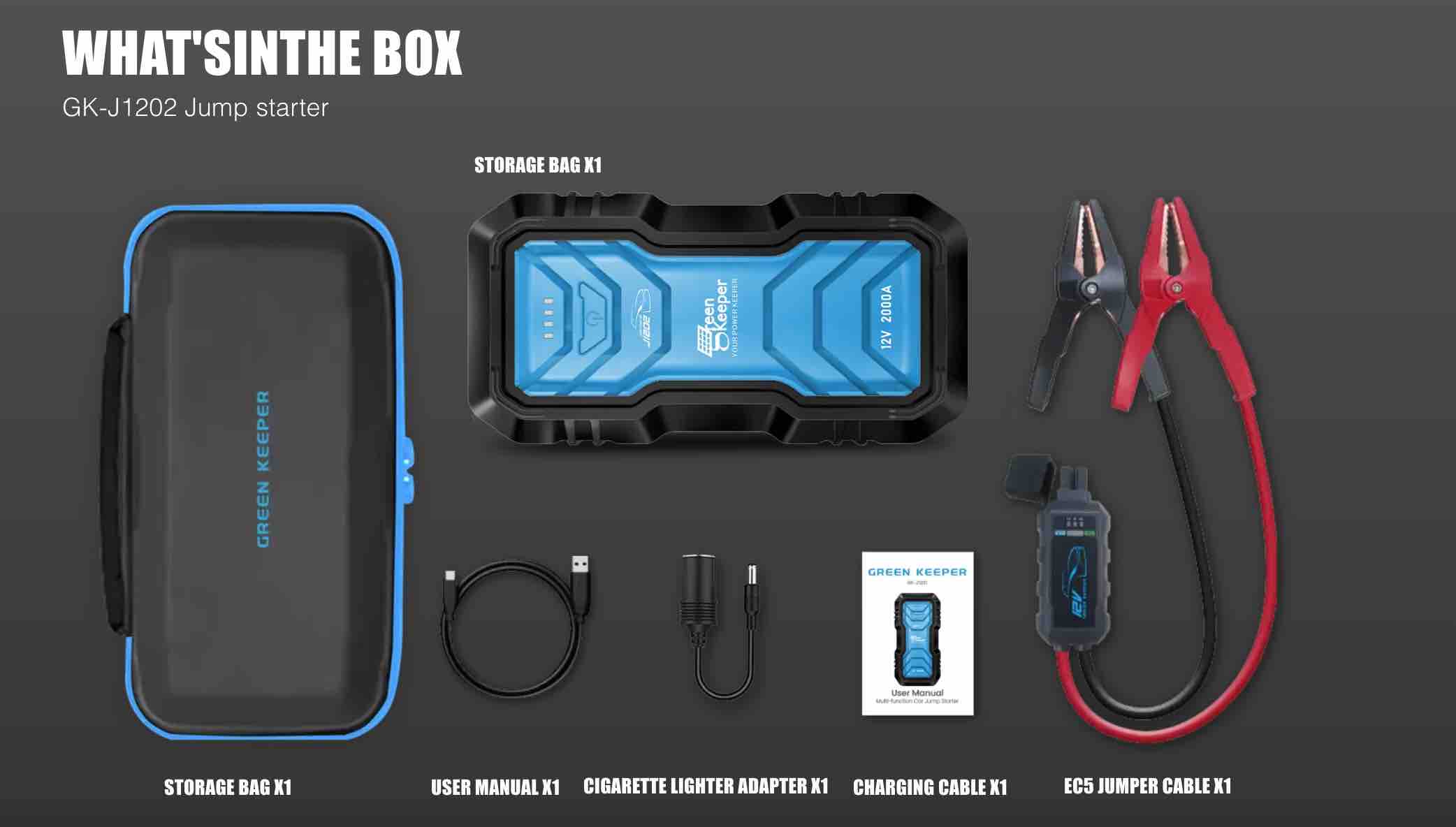
The Daily Commuter’s Jump Starter
If you use your jump starter 2-3 times annually for occasional dead battery emergencies, a quality lithium-ion model can maintain full charge for 4-5 months between maintenance charges. This makes quarterly checks sufficient for most personal vehicles.
Time-Saving Shortcut: Keep your jump starter plugged into a smart charger in your garage. These automatically maintain optimal charge without overcharging—ideal for forgetful users who want peace of mind.
The Fleet Manager’s Dilemma
For commercial applications with monthly use, consistent maintenance charging extends capacity for 3-4 years. The regular cycling actually benefits these units by preventing deep discharge that damages idle batteries.
Critical Insight: Fleet vehicles using their jump starter weekly will notice reduced charge retention within 2-3 years, requiring more frequent recharging intervals to maintain performance.
The Emergency Backup Nightmare
Unused for 12+ months, even a properly stored unit may retain only 60-70% charge. Never assume a year-old charge will provide adequate starting power—always perform a pre-use verification test.
Pro Tip: Store your jump starter with a small silica gel packet in its case to absorb moisture and prevent terminal corrosion during long storage periods.
Maximizing Your Jump Starter’s Charge Lifespan
Proper Storage Techniques
Follow these specific steps to maximize how long your jump starter holds a charge:
- Store upright to prevent electrolyte stratification (for lead-acid models)
- Keep in original protective case to prevent physical damage
- Maintain 50-70% charge for long-term storage—never store fully depleted
- Avoid direct sunlight and extreme temperatures at all costs
Critical Warning: Never store your jump starter in your vehicle during summer months. Trunk temperatures regularly exceed 140°F, reducing charge retention by 50% or more in just weeks.
Charging Best Practices
Use only manufacturer-recommended chargers to maintain proper battery chemistry balance. Generic USB chargers often don’t provide adequate current or voltage regulation, leading to incomplete charging that reduces effective capacity.
Expert Note: Monitor charging temperature—disconnect immediately if the unit becomes hot to touch. Excessive heat during charging accelerates chemical degradation and significantly shortens overall lifespan.
Final Reality Check: How long a jump starter holds a charge depends primarily on your maintenance habits, not just the device itself. Lithium-ion models offer 3-5 years of reliable charge retention with proper care, while lead-acid units typically provide 2-4 years. The critical factor isn’t the battery type—it’s your commitment to regular maintenance charging and optimal storage conditions that determines real-world performance. Check your unit quarterly, store it between 50-70°F, and always recharge immediately after use. These simple steps transform your jump starter from a potential liability into a truly reliable emergency tool that will save you when you need it most. Don’t wait for failure—take action today to ensure your jump starter will work tomorrow.


